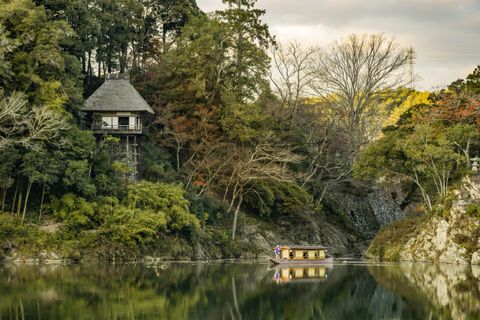
The Hiji River, Ozu, Ehime ©SHOKO Photography 2021
Standing guard by the Hiji River, striking Ozu Castle presides over the ancient town of Ozu, an hour’s drive outside of Ehime prefecture’s capital, Matsuyama. This small city is often referred to as “Little Kyoto” for its preserved samurai residences, wooden Edo-period castle, and atmospheric feudal-era streets.
I’m here on a tour of Ehime prefecture, in part to check out the newly revitalized buildings of Nipponia Hotel Ozu Castle Town. The restoration project, led by local group VMG Hotels and Unique Venues, has played a significant role in resurrecting Ozu, by rescuing several historic buildings around town from the brink of decay—much like a damsel in distress in a medieval romance.
The project has brought functionality and form back to a scattering of original Japanese houses, warehouses and mansions. Though these have now been fitted with contemporary comforts, their Edo-to-early-Showa design features have been preserved, like curved roofs, tatami mats and sliding screens.
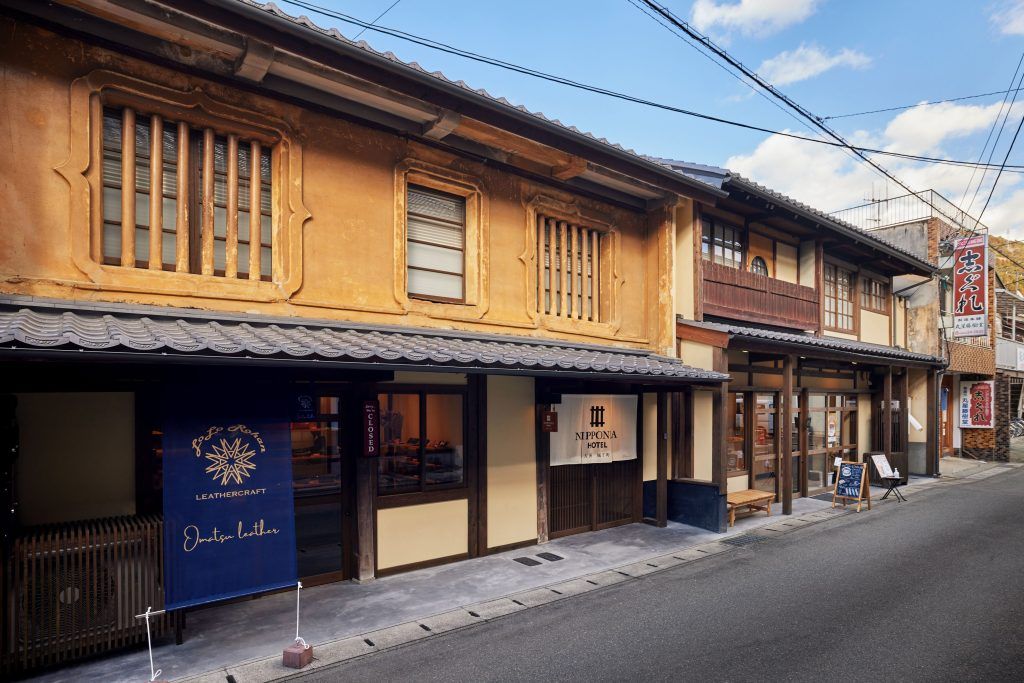
A street in Ozu. ©SHOKO Photography 2023
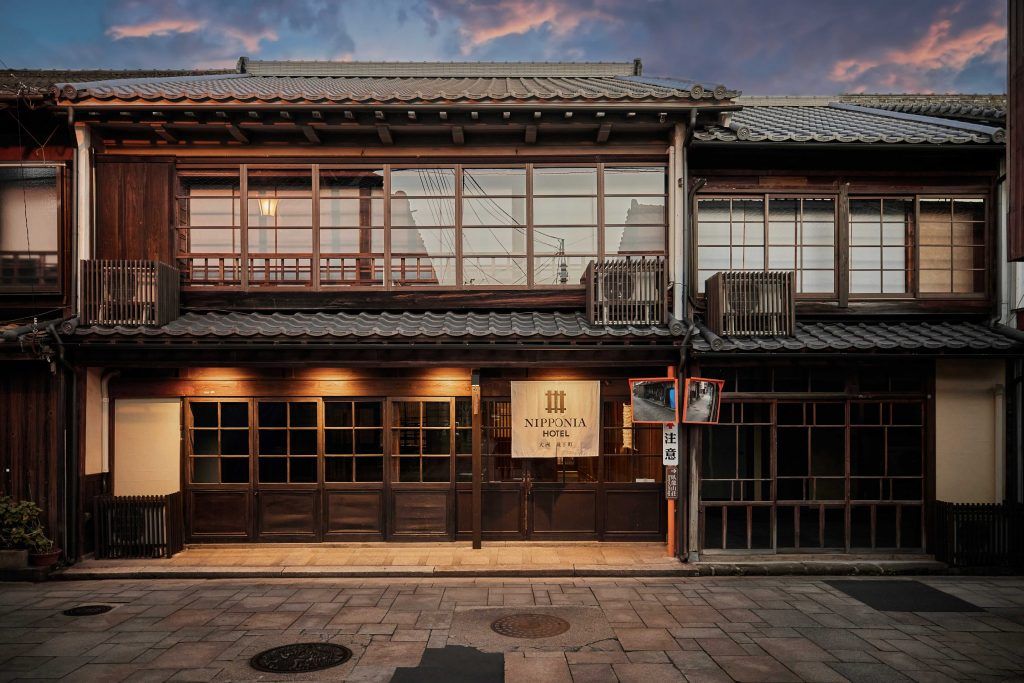
A historic building restored by Nipponia. ©SHOKO Photography 2023
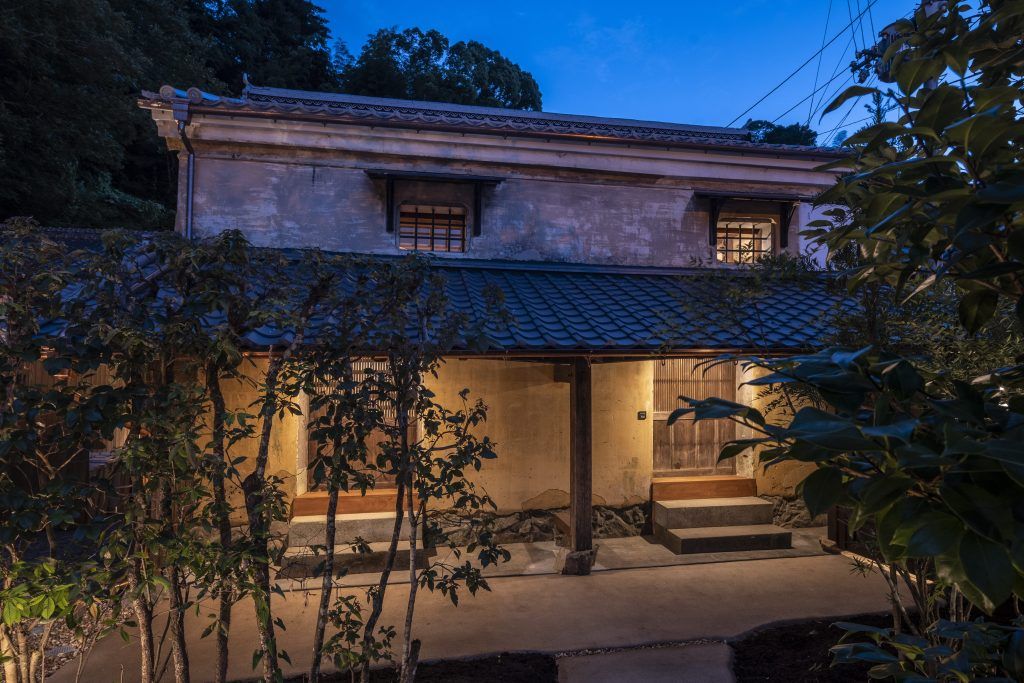
Another restored original dwelling in Ozu. Courtesy of Nipponia
I’m told my multi-level timber suite was originally the mansion of wax merchant Murakami Chojiro. While soaking in my deep cyprus bath and inhaling the intoxicating woody aroma, I hope I’m somehow absorbing a little of its wealthy former-owner’s good fortune. I also hope that one day I might be lucky enough to stay in another of Nipponia’s restored accommodations, Ozu Castle. It’s the only castle in Japan offering overnight stays—the handful of guests permitted each year are transported back to the 17th century, with the full run of the castle tower.
Earlier, I had a chance to admire the castle’s faithful restoration from the outside, while on a peaceful breakfast cruise on the Hiji River. And then again, during another standout dining experience in Ozu, at Nipponia’s Le Un restaurant, with castle views, where my knife slid effortlessly through local fish from Yawatahama and through buttery Aihime beef from nearby Kurita Farm.

Outdoor seating at Nipponia Hotel. Courtesy of Nipponia

A suite at Nipponia Hotel. Courtesy of Nipponia

Bath views during a Castle stay. Courtesy of Nipponia
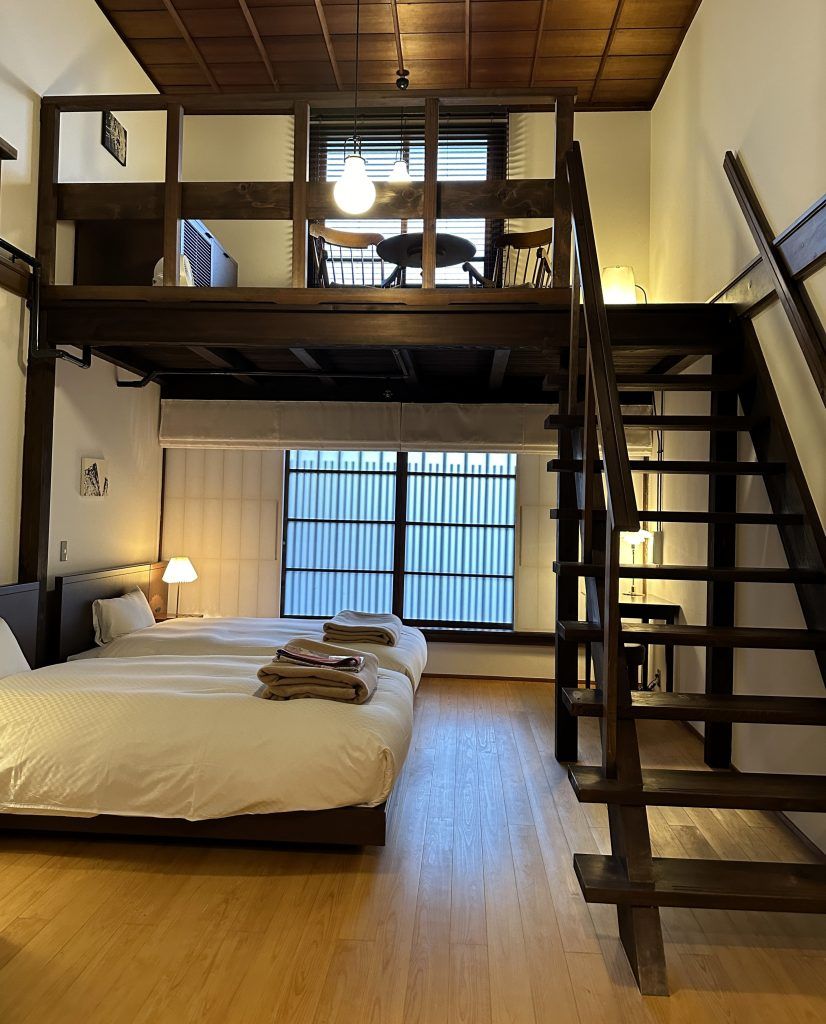
The author’s suite at Nipponia Hotel. Carmen Jenner
Adventures in Bathing
History in Ehime prefecture is not confined to Ozu. In the capital of Matsuyama, I got to immerse in more of it at Dogo Onsen. As an Australian, I’m not accustomed to communal bathing, so it was with a little trepidation that I figurately put on my big-girl pants—and then literally took them off—to bravely enter the onsen.
In case you didn’t know, nothing “impure” is meant to enter onsen water, including your thoughts, jewelry and swimsuit. My biggest fear, especially sans clothing, is slipping over— which I thankfully don’t do. Rather, I elegantly “glide” along the slippery, puddled tiles and down the stairs into the scalding water.
Not knowing where to look in the onsen, I find it impossible not to notice the flawless skin of the surrounding bathing beauties, regardless of body type or age. It calls to mind an interaction I had earlier in the streets of Ozu, where an elderly lady approached me and told me my skin was very white (which I decided to take as a compliment). At 88 years old, she had age-defying skin and a wrinkle-free face, which she attributed to a facial mist she crafted from sake.
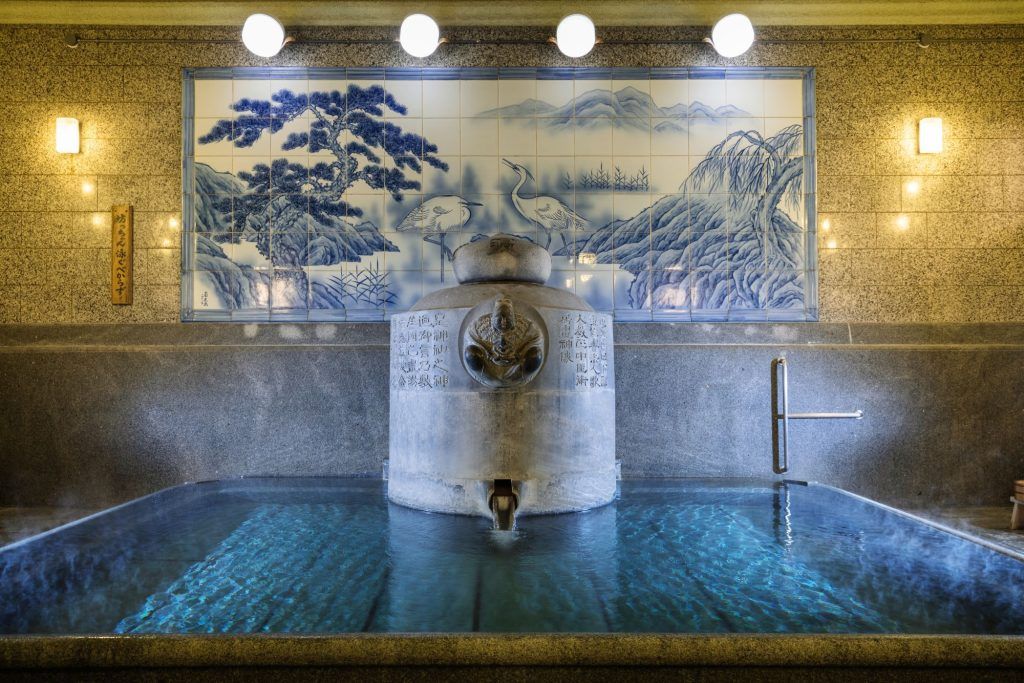
Dogo Onsen tile art. Courtesy (JNTO) Japan National Tourism Organisation
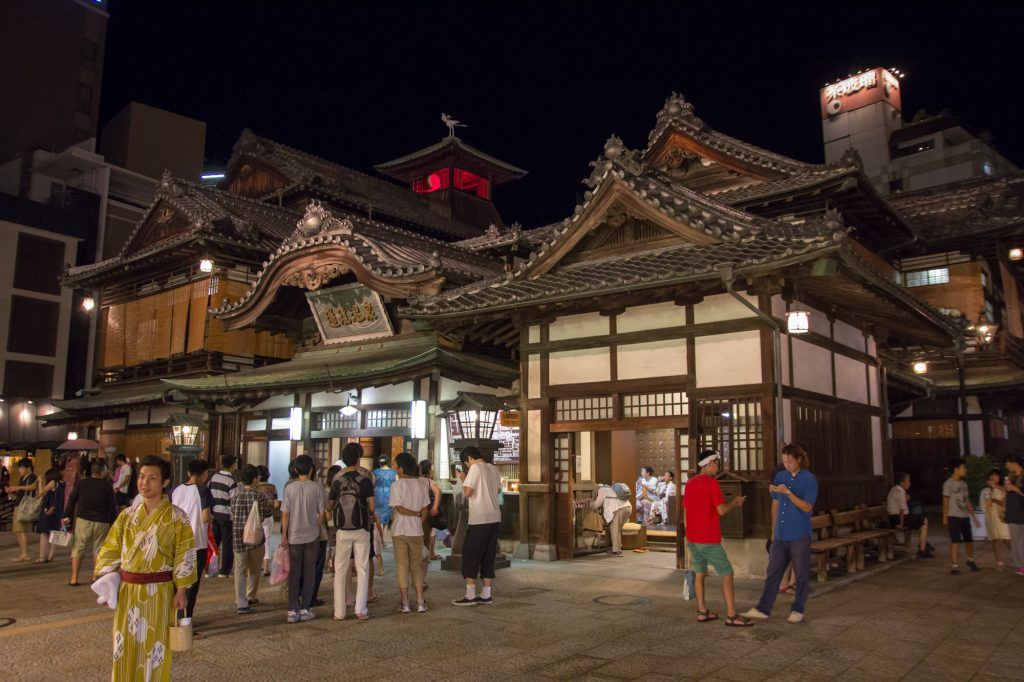
Dogo Onsen. Courtesy of Christian Kaden
Later on, I realise I really needn’t have worried about embarrassing myself. While I’m waiting in Dogo Onsen’s fully clothed public lounge, two naked ladies suddenly appear, so deep in conversation they lost their way out of the bathing area. The steamy air does little to conceal everyone’s surprise—or their blushes. Considering Dogo Onsen is the oldest hot spring in Japan, no doubt their faux pax is just one of countless in its 3,000-year history.
Legend has it that its water healed a deity’s illness in ancient times, and after soaking in the mineral-rich water, I certainly feel silky-smooth and a little less travel weary. And given almost every woman I see in Japan seems to have been blessed with a perfect complexion, maybe there really is something in the water.
Citrus Infusions
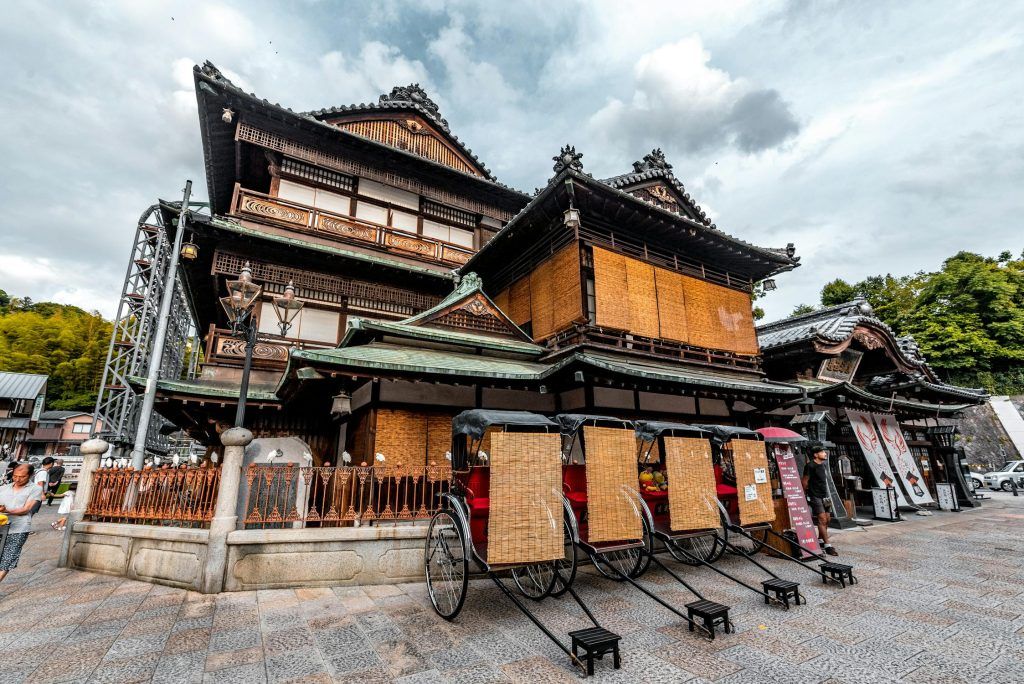 On the street in Matsuyama. Gije Cho
On the street in Matsuyama. Gije Cho
The laneways surrounding Dogo Onsen, including the covered Okaido shopping street, are lined with shops, and freshly bathed onsen goers wander around in robes to cafes serving orange juice on tap. Another claim to fame for Ehime prefecture is that it’s a leading producer of citrus in Japan, with over 40 varieties (I can personally recommend the blood-orange juice).
After a refreshing soak and citrus tasting, I decide to try another local specialty, tai meshi (sea bream rice), at a traditional izakaya called Shimana Taisho. There’s an art to this dish—it’s believed to bring good luck if you break a raw egg into soy sauce, then pour it all over the seabream and rice, and mix it together for a protein-rich feast.
Next up: a bar hop. We continue on in search of locally brewed beer and sake through Matsuyama’s quirky late-night enclaves. Matsuyama is the birthplace of the haiku, so we set out to find a haiku bar, where you are provided with the instructions and equipment (and liquid inspiration) to write a haiku. We find one at Jazz & Magic Bar WBGO, where bar owner and musician Hirofumi Tsutsumi treats us to mind-defying magic tricks as jazz greats like Miles Davis and John Coltrane serenade us on vinyl into the night. And yes, a haiku was penned (read on for that.)
Springtime in Matsuyama
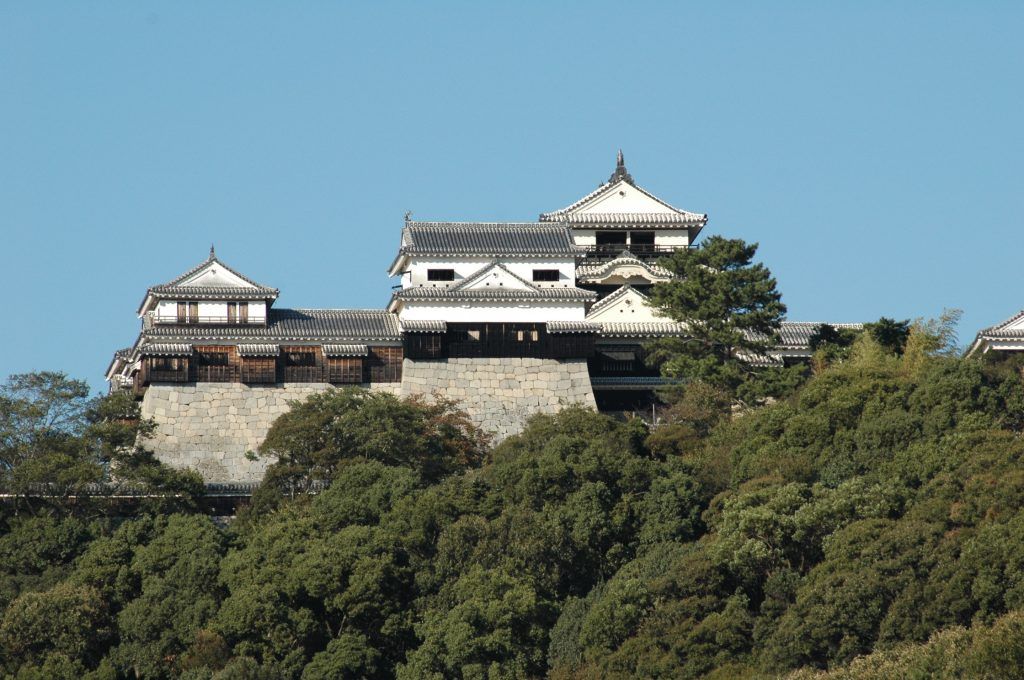 Matsuyama Castle. Courtesy of Ehime Prefecture Tourism Products Association
Matsuyama Castle. Courtesy of Ehime Prefecture Tourism Products Association
Matsuyama has a high concentration of hot springs, and onsen soaking is so ingrained in the culture here that many hotels include them. My hotel, Matsuyama Okaido has a rooftop open-air bath where you can immerse in this tradition while admiring the Matsuyama Castle, one of the biggest in Japan.
Japan once had around 3,000 castles, and the three-storey Matsuyama Castle is one of the 12 original remaining, preserved from the Edo period. Perched high on Mt Katsu, it’s accessible by foot—the hike will take you 15 to 20 minutes—or by ropeway or chairlift.
It’s impossible not to notice from many vantage points in the city—including from my hotel’s breakfast room—and visiting it is a must. Built in the early 1600s, its sprawling, well-preserved complex with its towering fortress walls, and weapons and pottery displays, gives you fascinating insight into what life must have been like back in the Edo period. Given its bird’s-eye view, it’s easy to imagine why this spot was chosen, with panoramas over Matsuyama to the Seto Inland Sea.
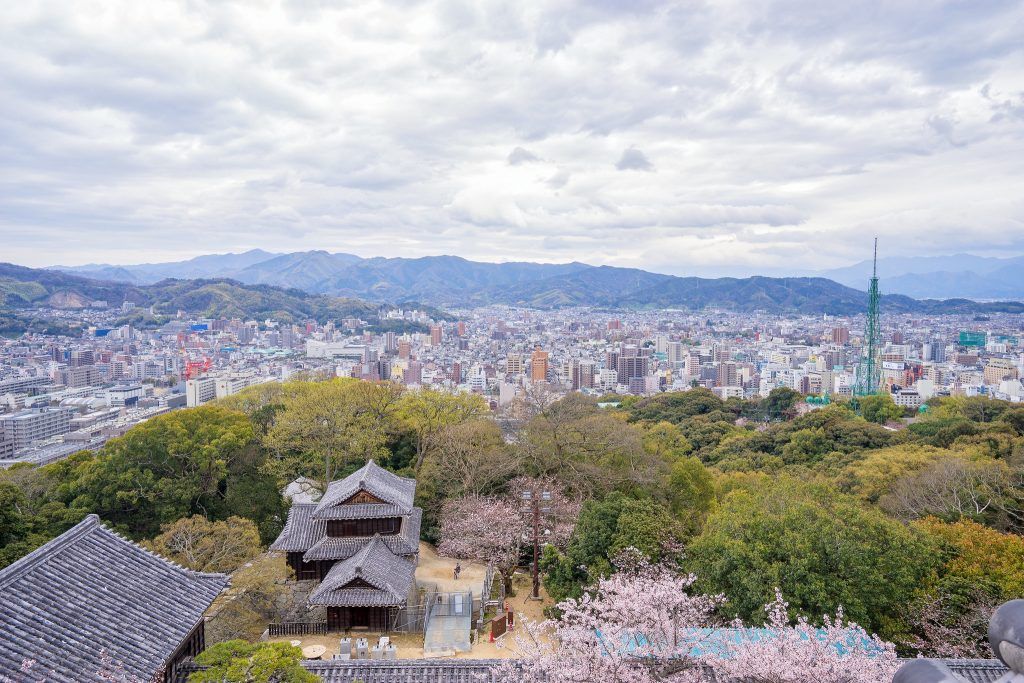
Matsuyama from above. Wei-Te Wong CC BY-SA 2.0
I discover that wandering around the castle grounds between its 200-or-so cherry-blossom trees (especially during sakura season), slurping on orange-flavored ice cream is an idyllic way to admire the sweeping sea and city views. And that when you’re walking on ancient pathways, there’s something very reassuring about having a hot spring close at hand, even if that involves bathing naked with strangers.
And yes, while initially that seemed wild to me considering Japan’s conservative nature, I realised that everything in Japan is intentional, and so aesthetically pleasing that it’s easy to forget the resurrected towns and restored Edo castles are not just there for the tourists, but to proudly preserve history and tradition.
Getting There
Located in the northwest of Shikoku Island, Ehime prefecture faces the Seto Inland Sea and is connected to the main island of Honshu by road, rail and air. To reach Ehime, you can take a connecting flight or bullet train from Tokyo to Matsuyama. I took a flight from Perth, Australia to Tokyo with ANA (All Nippon Airways).
If you’re lucky enough to fly Business Class, the treats are never ending, including an 18-inch touch screens and fully reclining flatbed with cozy pillows and blankets. The most difficult thing about the flight for me was choosing from the extensive entertainment options and whether to have a Western or Japanese meal, and wine or sake. I chose the Japanese option on the Perth-to-Tokyo leg, which included a seafood feast of Tokobushi abalone, tuna and salt-grilled salmon, followed by a baked yuzu confectionery for dessert. Premium wines are selected by expert somms, with Olivier Poussier also curating the economy-class menu. All of this was enough to inspire a haiku.
“I love business class
Flats beds are for me, yes please
No more economy”
Returning to Perth in economy I still got to enjoy an impressive amount of legroom, real cutlery, a choice of meals, and a very decent Grenache/Syrah from Spain (though there were many options to work through).
Nipponia Hotel Ozu Castle Town; doubles from USD387 per night
Matsuyama Okaido; doubles from USD $61 per night
The author was a guest of ANA, Nipponia Hotel Ozu Castle Town, Matsuyama Okaido and the Japan National Tourism Organization.
Note:
The information in this article is accurate as of the date of publication.
We may earn an affiliate commission when you shop through links on our site.
Written By
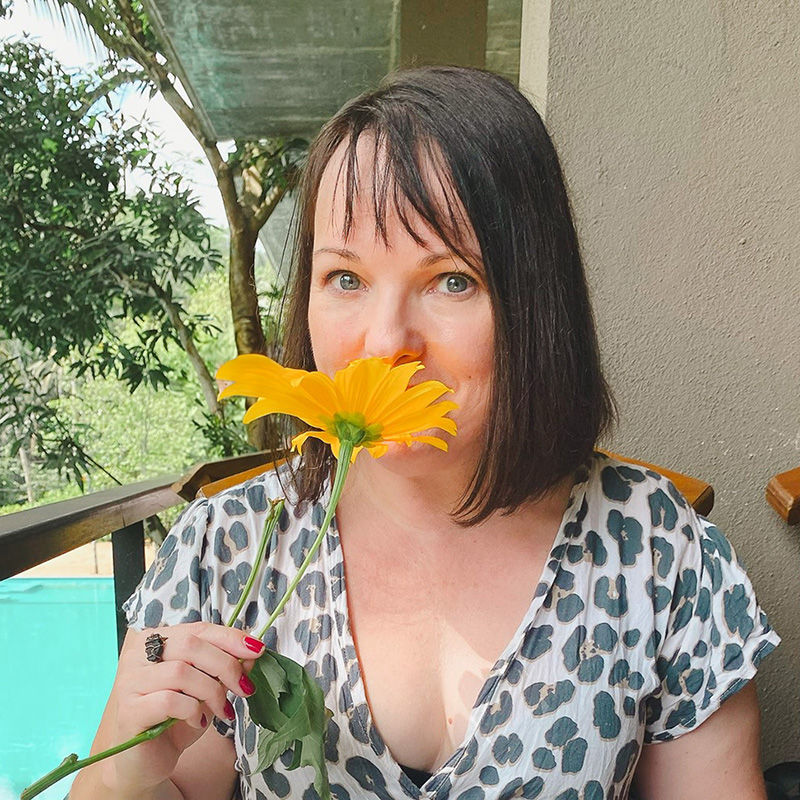
Carmen Jenner
Based in Perth Western Australia, Carmen Jenner is a freelance travel writer and copywriter who has written ..Read Morefor numerous magazines, newspapers and blogs around the globe. She is the author/co-author/ghostwriter/editor of nine books, including memoirs and non-fiction books. Also runs the Fluffy Towel Travel blog, for travellers who love fluffy towels as much as their discoveries. Read Less


AloJapan.com